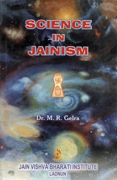
In India Mathematics has been a subject of the study since 1000 B.C. During the Vedic period, altars of specified shape and area were constructed for the sacrificial fire. They employed methods that could provide desired geometrical figures like triangles, rectangles, semi-circles, trapezia, rectangles with a semi-circle on one side. During the initial period the magnitudes of these figures were represented by segments.
The genesis of the Jain Mathematics in India may be traced as back as 300 B.C. to 500 B.C. It is a truism that during this period Jainism expanded in India. Jain mathematicians were not interested in the shape of altars; they turned their attention to and initiated studies focussing primarily on Cosmology and Cosmography. Secondly the studies were devoted to the behaviour of massless pudgal (like gluon particles) with a view to enriching the concepts on epistemology and philosophy. The Jain mathematicians employed simple and popular household things while constructing the figures of various systems discussed in Jain ancient scriptures. Their major contribution in Cosmology hinged on building a model of the universe. Also they formulated a new scientific paradigm of the eight-point centre of the universe. The illustrations pertaining to the shape of the universe and an eight-point centre are as follows:
[1] UNIVERSE (COSMOS)

- Three bowls were used.
One bowl placed convex-wise (i.e. upside down) at the bottom, the second bowl placed concave-wise (i.e. with the face upward) above it and the third one placed convex-wise (like the bowl at the bottom) upon the second one. The resultant configuration arising from the conjunction of three conical bowls with the shape of chopped of pyramids on four sides becomes the model comparable with the figure of cosmos. (fig.l)
This figure if seen in its vertical cross-section narrows from below to the centre and then widens again in nearly the same degree as above. This model shows that both the summit and base are built in a convex shape. - Similarly, efforts were made to construct a model of the universe with the aid of other household things.
- It is also mentioned that the cosmos is shaped like a human standing with legs apart, palms resting on his waist and therefore known 'Cosmic Person'.
- Kirfel, the German scholar, interpreted the figure of the universe as ‘three pyramids one upon the other, each having a square base and rising in steps on all sides, the centre one of which standing on its top surface’.
 Dr. Mahavir Raj Gelra
Dr. Mahavir Raj Gelra

